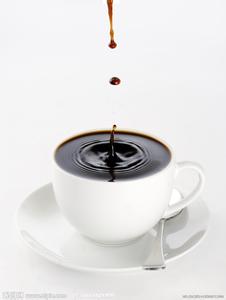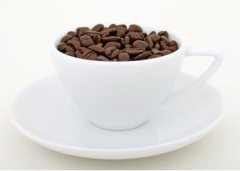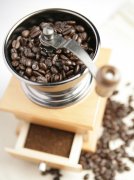What is the relationship between coffee beans and freshness?
What is the relationship between coffee beans and freshness? Should we buy coffee beans with oil or without oil?

Have you ever seen coffee beans that look oily? Why do some coffee beans have an oily surface, while others are "dry and comfortable" without oil? What is the relationship between coffee beans and freshness? Should we buy coffee beans that look "oily" or "not oily"?
Coffee oil is not oil.
These "oils" evenly distributed on the surface of coffee beans are not actually "oils", but water-soluble organic substances that look like oils. Coffee oil itself contains many coffee aroma components that dissolve in water, so the surface of your brewed coffee does not float a layer of greasy grease.
2 reasons for "oil beans"
There are two reasons for "oil beans". a) stale light baked beans b) fresh dark baked beans. The following is an in-depth discussion.
a) stale light baked beans
Light baked beans, which are light brown in appearance, dry in appearance and do not produce oil after baking. About five days after roasting (it may be shortened to one or two days in high summer), the phenomenon of "spotty oil" begins to appear (the appearance of spotty oil droplets on one side of the coffee beans). Please note that a little "spotty oil" does not mean that the coffee beans are not fresh, but sometimes the flavor of the light roast coffee beans is at its peak. Continue to put it down, after more than two weeks, the surface of the light baked beans gradually appears a layer of uniform, thin and bright oil, smell not sweet, but with the smell of oil consumption, at this time, the flavor of "light baked beans" has declined, should avoid buying.
b) Fresh deep-baked beans
Dark baked beans, which are dark brown in appearance, appear slightly oily after baking, and a large amount of oil begins to appear on the surface from the first day to the second day after baking. Deep baked beans with shiny appearance do not mean that they are not fresh. On the contrary, deep baked beans will gradually dry out after three weeks, and finally become dry and stale beans. Therefore, if you see coffee beans that are dry and not oily, but appear dark brown in appearance, please pay special attention to whether they are marked with roasting date.
How to judge the freshness of coffee beans
Even if the beans are not fresh and oily, they will gradually dry out after a long period of time (such as three months) and eventually return to a dry and oily appearance. It can be seen that whether the appearance of oil is only a reference to judge the freshness of coffee beans, not absolute.
How should we judge the freshness of coffee beans?
First of all, please purchase from a professional coffee roaster who clearly labels the date of the product, has a brand reputation, and emphasizes fresh roasting. In addition, good coffee bags usually have a "one-way vent valve"(a button-like hole in the top of the coffee bag) design that allows the coffee beans to vent naturally occurring carbon dioxide. The one-way exhaust valve at the nose, gently squeeze the coffee bean bag, smell the squeezed gas taste, if it is a charming aroma of coffee, freshness is not a problem, on the contrary, if it smells not strong enough, or even with the smell of smelly oil, it means that this packet of coffee has long deteriorated and should be avoided.
- Conclusion-
"Freshly baked light-baked beans should be dry and oil-free on the surface, and fresh-baked deep-baked beans should be oily on the surface" is a correct concept that we should understand. When buying coffee beans, the appearance of oil, no oil is a reference index to judge freshness, but not absolute. The best policy is to select reputable businesses and open your eyes to buy.
Important Notice :
前街咖啡 FrontStreet Coffee has moved to new addredd:
FrontStreet Coffee Address: 315,Donghua East Road,GuangZhou
Tel:020 38364473
- Prev

Baristas must see the "seven weapons" that baristas must have.
As a good barista, you must know seven kinds of carry-on weapons: the first is the milk pitcher. Basically, a small size of 2 people is used, but there is also a spare milk pot for 4 people. There are two types of upper and lower width and equal width, so you might as well choose a milk jug that is easier to use. The second is marocchino (Malocino) special tea.
- Next

The Secret in the packing label of Coffee Bean: interpreting the name of Coffee Bean
Why coffee beans have such a long name? Why is there a single item, deep roast and Italian style of coffee? Where did so many names come from? When you walk into a coffee store or open the website of a professional coffee and bean seller, you may be confused by the dazzling variety of coffee names. Why coffee beans have such a long name? Why is there a single item, deep roast and Italian style of coffee? How is this divided?
Related
- Beginners will see the "Coffee pull flower" guide!
- What is the difference between ice blog purified milk and ordinary milk coffee?
- Why is the Philippines the largest producer of crops in Liberia?
- For coffee extraction, should the fine powder be retained?
- How does extracted espresso fill pressed powder? How much strength does it take to press the powder?
- How to make jasmine cold extract coffee? Is the jasmine + latte good?
- Will this little toy really make the coffee taste better? How does Lily Drip affect coffee extraction?
- Will the action of slapping the filter cup also affect coffee extraction?
- What's the difference between powder-to-water ratio and powder-to-liquid ratio?
- What is the Ethiopian local species? What does it have to do with Heirloom native species?

